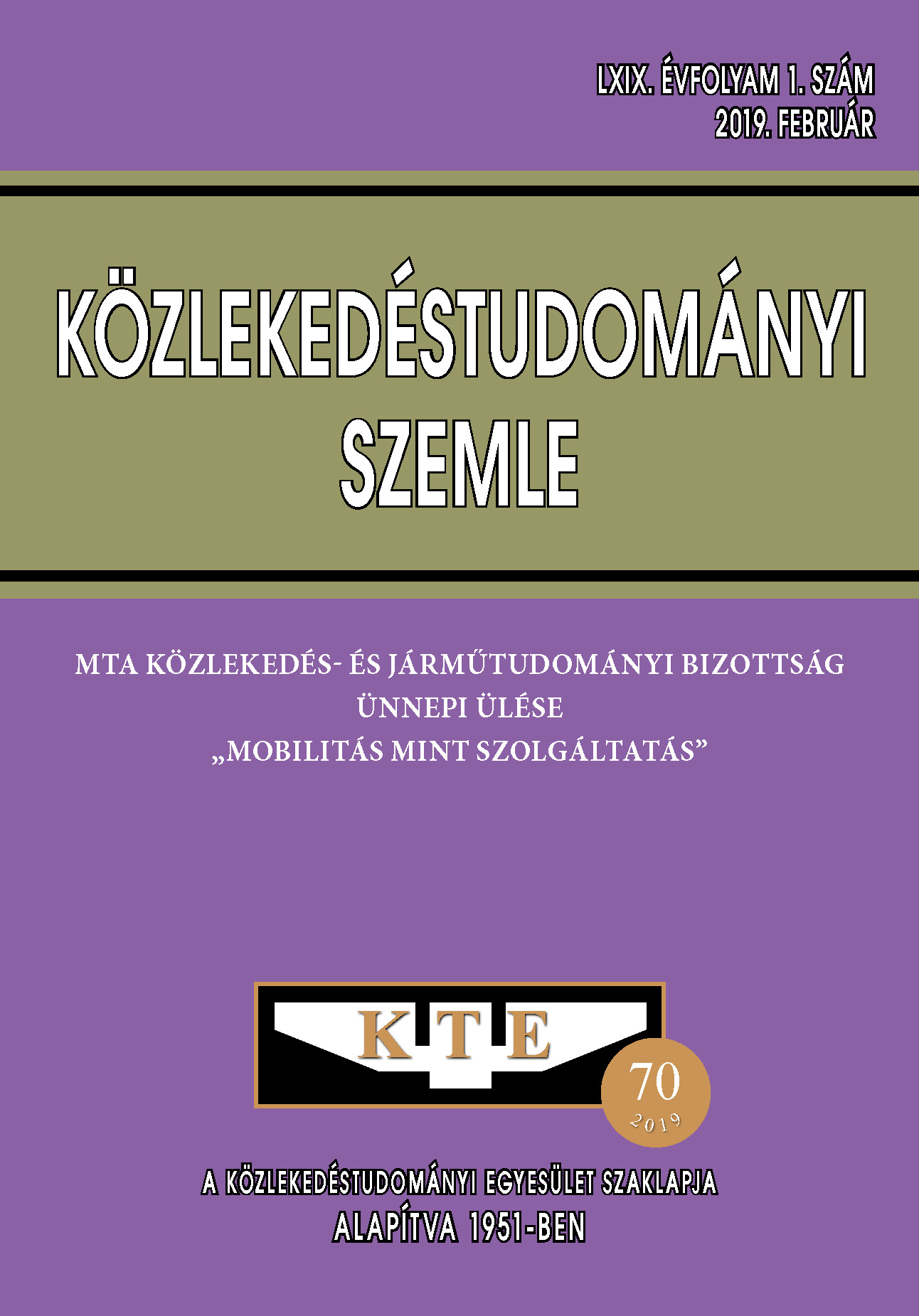Sustainability aspects of the mobility services: societal effects, space- and ime management
Abstract
Changes in transport are moving together with the long-cycle trends of the society, with the industrial and technological revolutions, and with the reorganizations effecting the whole culture of production. However, it may be concluded from the revealed trends that they keep going on or they begin to change. The opportunities opened up by new technologies often evolve but over a longer period of time. The most important trend change in the past period is the exceeding of modernity's quantitative based thinking, and that brings to the transport the blurring of rigid separating boundaries, the establishment of integrations and the reflection of the demand-side interests of the consumer. Among the new technologies based on digitized network structures, the autonomous vehicle and vehicle sharing together can fit to these trends, helping the mobility to became a service organised in an integrated system. Decreasing the space- pollution of the motorization is expected to lead to those sustainability improvements that significantly affect the livebility of the settlements.
References
Lukovics Miklós – Udvari Beáta – Zuti Bence – Kézy Béla (2018) Az önvezető autók és a felelősségteljes innováció. Közgazdasági Szemle 65. évf. 9. szám, pp. 949-974.
Nakicenovic, N. (1988) Dynamics of Change and Long Waves. IIASA Working Paper. IIASA, Laxenburg, Austria: WP-88-074 http://pure.iiasa.ac.at/3131/1/WP-88-074.pdf
Ausubel, J.H. – Marchetti, C. – Meyer, P.S. (1998) Toward green mobility: the evolution of transport, European Review, Vol. 6, No. 2, pp. 137-156. https://core.ac.uk/download/pdf/52948086.pdf
City of London, Strategic Transportation Department of the Built Environment (2018) Traffic in the City 2018. http://democracy.cityoflondon.gov.uk/documents/s91800/Appendix%201%20-%20Traffic%20in%20the%20City%202018.pdf
Direction régionale et interdépartementale de l’Équipement et de l’Ameénagement d’Ile-de-France, Service de la Connaissance des Études et de la Prospective (2013) Motorisation et usage de la voiture en Ilede-France: Enquete globale transport. 26 p. Idézi Vitézy
Vitézy Dávid (2018) A jövő városának közlekedése: veszélyek és lehetőségek. Előadás: https://www.youtube.com/watch?v=r3NCUhFsKLs
Mészáros Ferenc dr (2019) Lehetséges új üzleti modellek alkalmazása a mobilitásszolgáltatásban. Közlekedéstudományi Szemle Vol. 69. No. 1. pp. 41-47.
Fleischer Tamás – Tir Melinda (2018) Hazai közlekedési időmérleg elemzés. Közlekedéstudományi Szemle Vol. 68. No. 2. pp. 7-22. http://real.mtak.hu/79655/1/07_PDFsam_KTSZ_2018_02_vegleges_u.pdf (2019-04-30-tól) DOI: http://doi.org/cxmc
Articles published electronically are open access (OJS), freely available online and can be downloaded. Authors of articles are not charged any publication or publishing costs (APC). Users have the right to read, download, copy, print, and search the articles, or share the full text with a link.
Authors must declare that their submission has not been previously published in another journal, that financial support has been acknowledged, and that the list of references is complete and accurate, including specification of URLs and DOIs (if available). When submitting a draft article, each author approves the submitted version. Authors guarantee that the article is their original work. Authors are required to participate in the peer review process, follow the advice of reviewers, meet the prescribed deadlines, and, if any, withdraw the submission or correct errors.
All submitted articles are subject to peer review, where the editors request an independent evaluation from at least one expert, ensuring that the reviewer(s) have no conflicts of interest with the authors. The final decision is made by the Editor-in-Chief, who takes into account the evaluations and the suggestions of the editors. The editors and reviewers treat the submission confidentially.
The publisher and editors are committed to maintaining high ethical standards and to preventing publications that involve research misconduct. They follow the COPE guidelines on such ethical issues.
The authors retain copyright and grant the journal the right of first publication under the Creative Commons License (https://creativecommons.org/licenses/by-nc-nd/4.0), which allows others to share the work, while acknowledging the authorship of the work and the first publication in the journal.
The journal archives all published articles, and the journal's owner, the Hungarian Society of Transportation Sciences, will continue to operate the database even if the journal ceases to be published.















